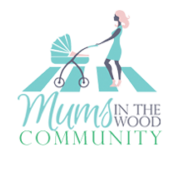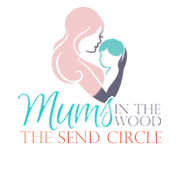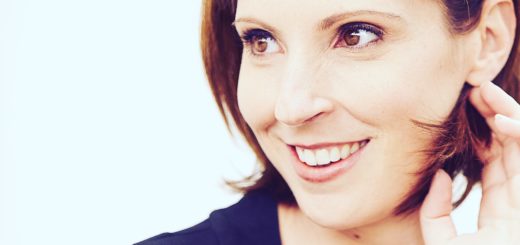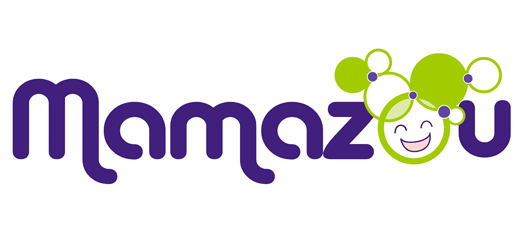Skin changes during pregnancy and how to tackle them – Dr Justine Kluk
Dr Justine Kluk is a London-based consultant dermatologist and skincare expert with boutique private dermatology clinics in Hampstead Garden Suburb and Harley Street. She consults on all aspects of medical and cosmetic dermatology, and is especially renowned for her treatment of acne, scarring and prevention of premature skin ageing.
Here she shares some highlights from her recent talk to Mums in the Wood about skin changes during pregnancy and how to tackle them.
During pregnancy our blood volume is significantly increased and our sebaceous glands are stimulated to produce more sebum (natural oils). The net result is a more radiant and dewy complexion, also known as the “pregnancy glow”. Whilst some women get to enjoy brighter skin tone and glossier hair, there are a multitude of other skin, hair and nail changes that can occur during pregnancy that are less well known.
1. Common physiological changes
Pregnancy causes changes in blood hormone levels. The most well-known of these is oestrogen. Increased oestrogen is responsible for changes in the blood vessels of the skin, such as:
· Increased redness of the palms (palmar erythema)
This usually affects both palms and is not associated with itching, scaling or dryness.
· Dilated blood vessels (spider angiomas)
Tiny red bumps appear on the face, neck, chest and arms. These are known as spider angiomas, and are given this name because if you look closely they appear to have thin spidery legs. They are essentially dilated blood vessels so they blanch if you press on them. The red bumps tend to improve on their own after delivery, but can be very easily treated with cautery by a dermatologist if they persist.
· Varicose veins
The weight of the womb as it enlarges during pregnancy can put pressure on blood vessels in the lower legs and decrease blood flow from the lower body back towards the heart. This slowing of the circulation causes the veins in your legs to become swollen and can also cause sore puffy ankles.
In most cases, varicose veins are a cosmetic problem that will go away after delivery, but there are some things you can do to ease the swelling and soreness and prevent varicose veins from getting worse:
1. Be sure to move around from time to time if you must sit or stand for long periods
2. Do not sit with your legs crossed for long periods
3. Prop your legs up on a couch, chair, or footstool as often as you can
4. Exercise regularly—walk, swim or ride an exercise bike
5. Wear support socks
Pregnancy also stimulates pigment-producing skin cells and can cause darkening of the skin. This may give rise to:
· A dark vertical band that runs from the umbilicus to the pubic hair, known as the linea nigra
· Darkening of the nipples and genital skin
Other common pregnancy-related skin changes include:
· Skin tags
These are small, loose or wiggly, skin-coloured growths that usually appear at areas exposed to rubbing e.g. under your arms or breasts, around the neck or in the groins. In many cases, they disappear after delivery. If they persist, these tiny tags can be snipped off and cauterised quickly and easily by a dermatologist.
· Stretch marks
These typically develop over the breasts, belly, hips, and thighs around the 25th week of pregnancy, although some women develop stretch marks even earlier. They begin as reddish-purple lines and, with time, become paler and slightly wrinkled, like tissue paper.
50% – 90% of pregnant women will get stretch marks. The exact mechanism is still unknown, but they are commonly thought to be caused by rapid weight gain and subsequent stretching of the skin. Stretch marks are often seen in more than one family member, so you have a higher chance of developing them if your mum or sister had them. They are also more common in young mums, women who have a history of stretch marks as a teenager, women who are overweight before pregnancy and in those who have large babies.
Unfortunately, no good treatment exists. Various oils, cocoa butter, vitamin E etc have been used, but the benefit of these is not certain. Daily massage of the skin with a simple moisturiser or oil may help keep the skin supple. It is also worth avoiding excessive weight gain as this may partly help to prevent the development of stretch marks.
After delivery, there are certain prescription creams, such as those containing retinoids, that can be helpful at reducing stretch marks. These are strictly forbidden whilst you are pregnant or breastfeeding, however, as they may harm the baby. Medical needling or laser treatment are more definitive options to consider once your family is complete.
· Changes in hair growth
Our hair grows in cycles and, at any point in time, a proportion of our hair is in the resting phase. With the hormonal changes of pregnancy, more hair goes into the resting phase than usual. This causes reduced hair shedding and manifests in apparent thickening of the hair. Unfortunately, approximately 3 months after delivery, the hair cycle normalises and this can cause a temporary, but sometimes very pronounced, increase in hair loss from the scalp. This process is called telogen effluvium. It can take six to twelve months post-delivery to recover, but the hair will usually return to how it was before pregnancy.
Pregnant women may also experience hair growth in typical male sites, for example the face, chest and belly. This phenomenon is also related to hormonal changes (more male hormones). Usually, it is not severe and not permanent and tends to disappear within a couple of months after delivery.
2. Skin conditions that may flare up in pregnancy
· Acne
Many women suffer with breakouts during pregnancy. Some have already had acne in the past and notice that it comes back or gets worse during pregnancy. Other women who have always had clear skin will develop acne for the first time whilst they are pregnant.
Unfortunately, many of the usual acne prescriptions such as retinoids or antibiotics cannot be used during pregnancy so treating breakouts can be challenging at this time. This means that for most women, getting their skincare regime right is probably the most important step to take. Top tips include:
1. Using a gentle skin cleanser morning and evening e.g. Cetaphil cleanser
2. Avoiding vigorous scrubbing or exfoliating which actually increases inflammation
3. Trying not to pick or squeeze spots which can introduce bacteria
4. Checking that all skincare products and make-up are labelled “non-comedogenic” which means that they won’t clog your pores
5. Applying SPF 30+ as a sun protection moisturiser before make-up to reduce darkening of blemishes and scarring
6. Using a clay mask once or twice per week to draw impurities out of the pores and reduce oiliness
For those with particularly severe acne e.g. nodules and cysts, it may be worth getting the acne under control before conceiving and then using simple skincare to maintain results during pregnancy.
· Melasma
This is blotchy grey or brown discolouration on the forehead, cheeks and upper lip caused by a combination of pregnancy hormones and sun exposure. It is much more common in darker skin types. To reduce the impact:
1. Maintain strict sun avoidance measures – even a few minutes of careless sun exposure without protection can make things a lot worse
2. Use a broad spectrum SPF 50 with UVA and UVB protection every morning without fail
3. Top up your sunscreen midday and late afternoon if you are outdoors all day
4. Wear a wide-brimmed hat to keep the sun off your face at all times
5. Use make-up that offers good coverage to camouflage it e.g. Vichy Dermablend, Estee Lauder Double Wear
Melasma often fades after delivery, but can also be improved with skin lightening creams, laser or chemical peels if it persists.
· Dry irritable skin
Many women complain of dry irritable skin particularly towards the end of their pregnancies. This can be especially troublesome in those who are already prone to dry skin as a result of eczema or psoriasis. My advice is:
1. Close the bathroom door when showering to increase humidity
2. Limit your time in the shower or bath to 5 or 10 minutes at a time
3. Use warm rather than hot water
4. Wash with a gentle, fragrance-free cleanser e.g. Aveeno body wash
5. Apply enough cleanser to remove dirt and oil, but avoid using so much that you see a thick lather
6. Blot your skin gently dry with a towel
7. Slather on moisturiser immediately after drying your skin – use an ointment or balm rather than a lotion
8. Use only gentle, unscented skin care products
9. Spray fragrance on clothing, not directly on skin
10. Wear gloves to perform tasks that require you to get your hands wet or get chemicals, detergents, uncooked food and other substances on your hands
11. Wear cotton or silk fabrics under clothing made of wool or any other material that feels rough
12. Use laundry detergent labeled “hypoallergenic” or “non-bio”
13. Plug in a humidifier
3. Specific rashes of pregnancy
There are a handful of specific skin conditions that arise only in pregnancy.
· Intrahepatic cholestasis of pregnancy
This is actually a liver condition and affects about 1% of pregnancies during the second and third trimesters. It results in unexplained itching of the palms and soles without a rash and is confirmed by a blood test showing raised blood levels of bile acids and/or liver enzymes.
It is essential to recognise this condition as intrahepatic cholestasis may be associated with increased risk of preterm delivery and fetal distress. The goal of treatment is to reduce symptoms and to prevent maternal and fetal complications. Most publications recommend early induction of labor, commonly at 37 to 38 weeks. A medication called ursodeoxycholic acid is likely to be prescribed as trials demonstrate decreased itching and serum bile acids, and possibly a protective effect towards the baby.
· Prurigo of pregnancy
This causes scattered itchy skin bumps and can arise at any stage of pregnancy. It should be managed with moisturisers predominantly, but topical steroid creams may help individual skin lesions.
· Pruritic Urticated Papules and Plaques of Pregnancy
Commonly referred to as PUPPP, this pregnancy-related rash is most likely to affect first time mums and onset is usually in the 3rd trimester. It is actually very common and affects as many as 1 in 300 pregnancies. Swollen, red itchy bumps appear along the stretch marks on the belly and then spread to the arms and thighs. Some of the red bumps appear to be surrounded by a white halo. The belly button is typically spared.
PUPPP is thought to be related to stretching of the skin which is why it is more common in first pregnancies. It has an excellent prognosis and has not been shown to cause any increased maternal or fetal risks. It generally settles on its own within days of delivery, but if symptoms are very irritating, cooling moisturisers containing menthol, medium potency topical steroid creams and antihistamines provide relief.
· Pemphigoid gestationis
This is a very rare blistering disease of pregnancy and one of the most serious of all the pregnancy-related rashes. The onset is most often in the 2nd trimester, but it may arise at any stage and may even appear after the baby is born (20% of cases). In some women, it has been known to recur with menstruation, the oral contraceptive pill and also in further pregnancies.
Pemphigoid gestationis causes itchy red bumps and blisters which are mainly on the abdomen. Unlike PUPPP, this rash affects the umbilicus in 50% of cases. It can lead to large areas of raw blistered skin and has also been associated with preterm delivery, small-for-gestational age infants and blisters on the baby’s skin due to maternal transfer of antibodies.
To be on the safe side, any pregnant woman with blisters on the skin should be referred urgently by their midwife or obstetrician to a dermatologist to rule out this diagnosis. Topical steroid creams may be all that is needed in mild or very localised disease. For more widespread blisters, oral steroids may be needed. These are safe to use in pregnancy, if needed, and tend to be weaned off very gradually to reduce the chances of recurrence.
To discuss any of these issues in more detail or for further information about the clinic, please call 0203 733 3225 to make an appointment or visit www.drjustinekluk.com



























